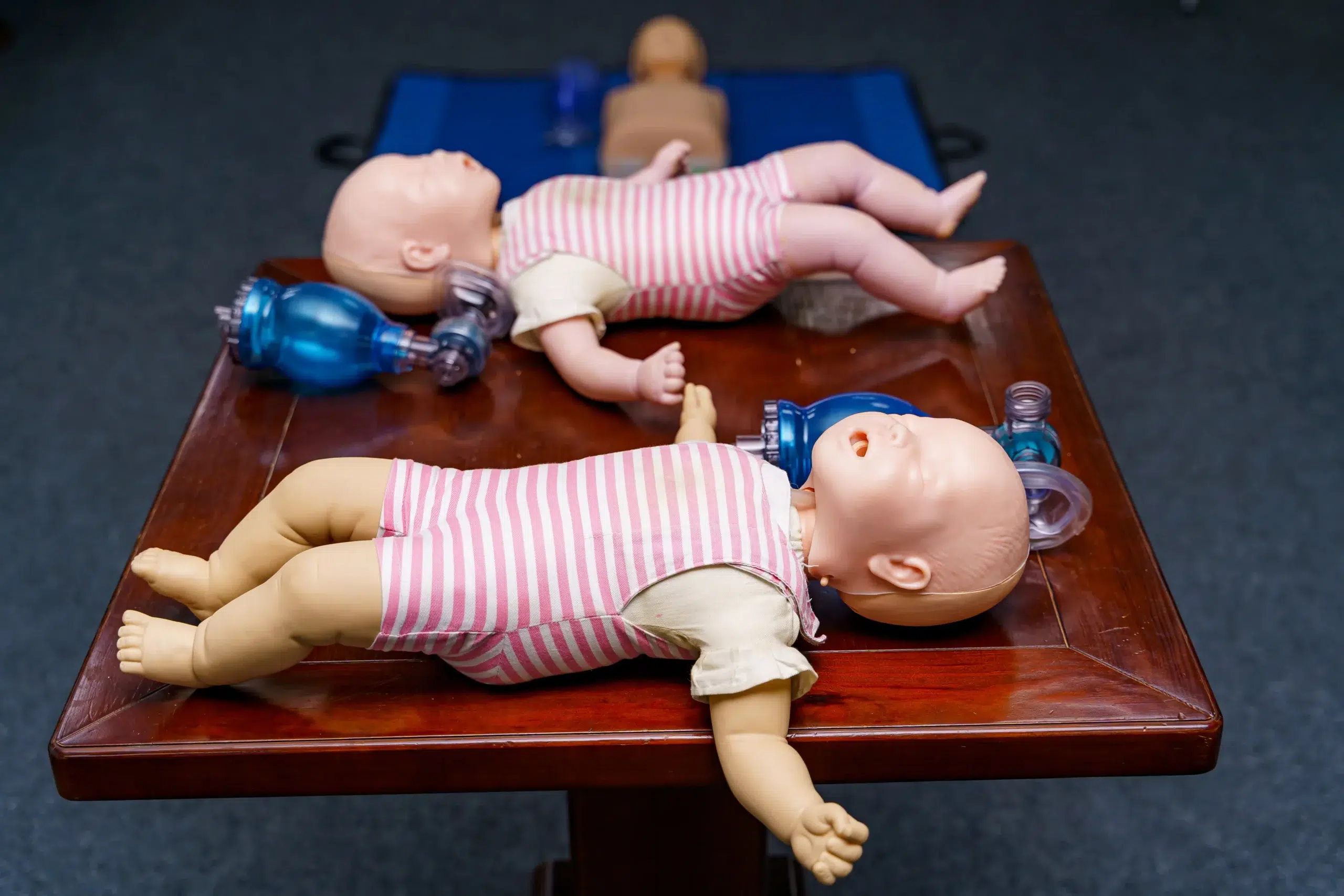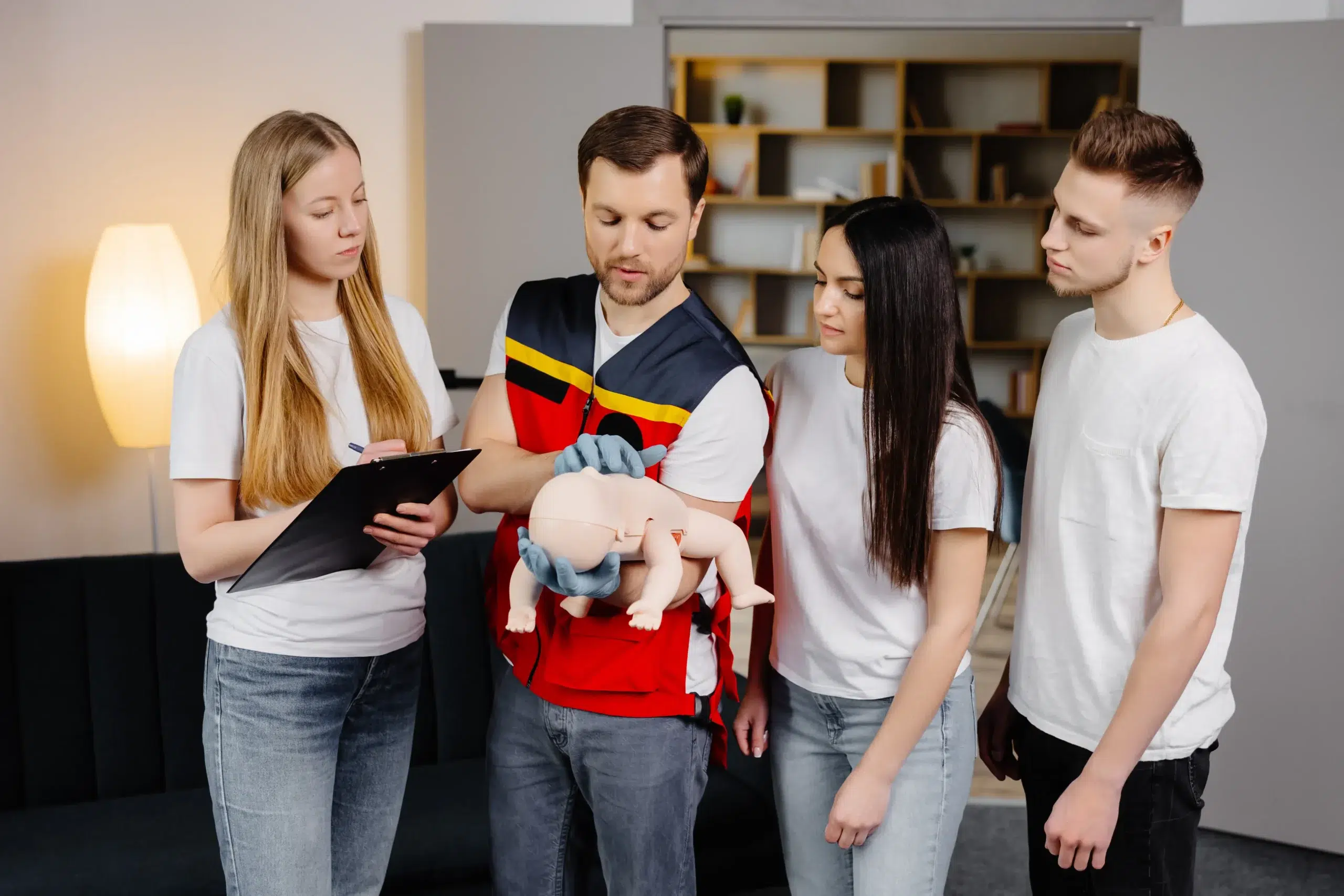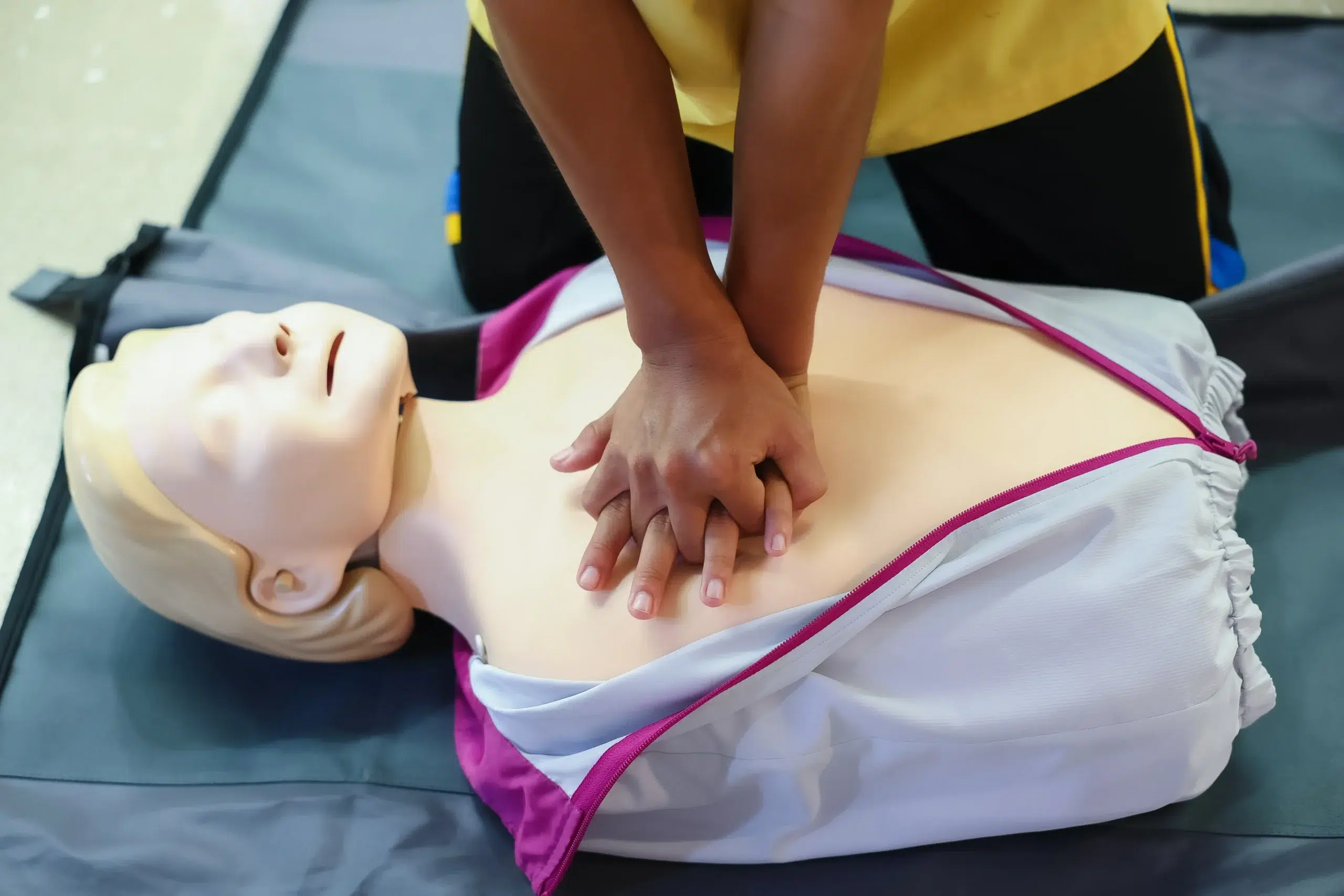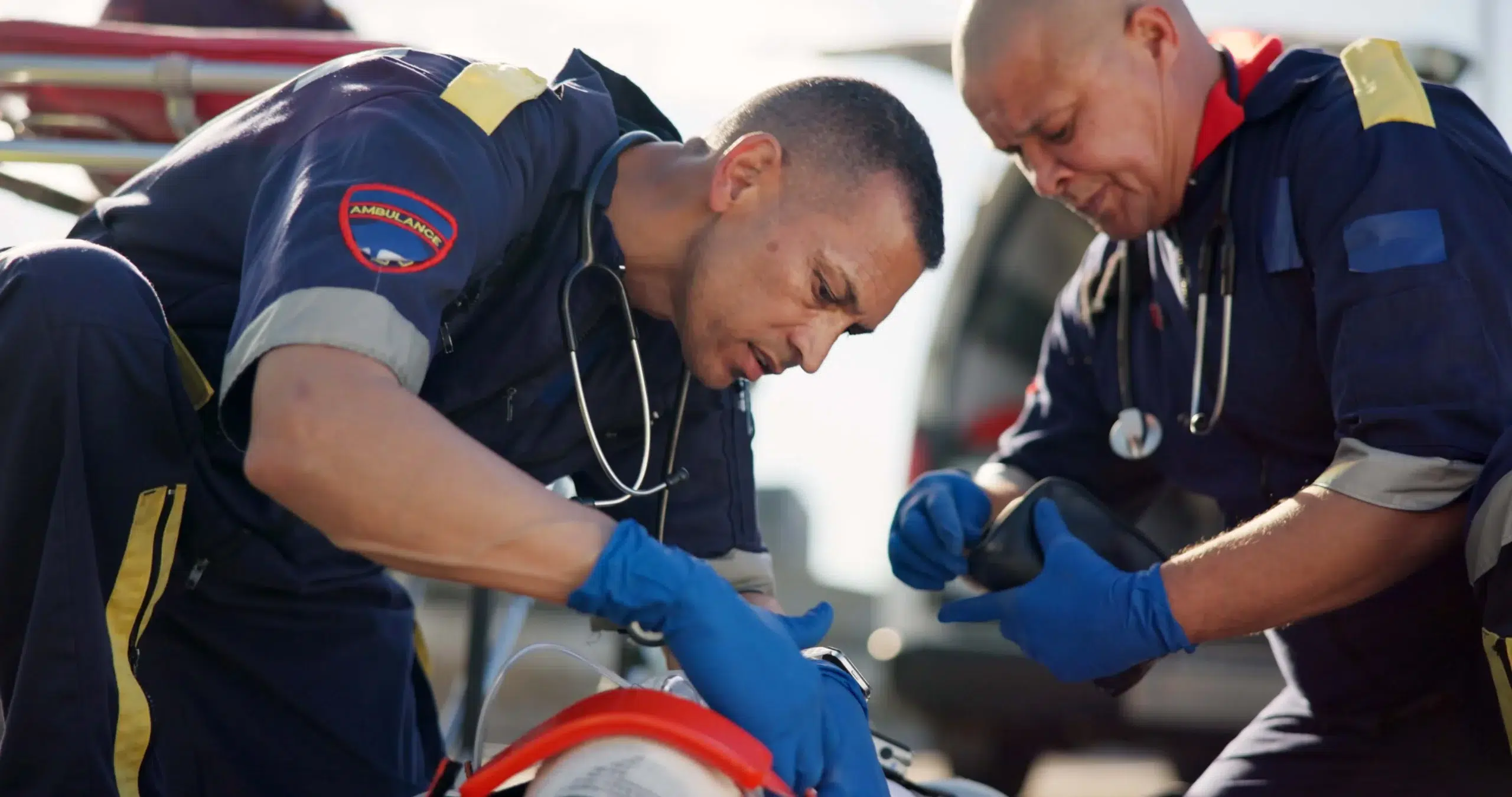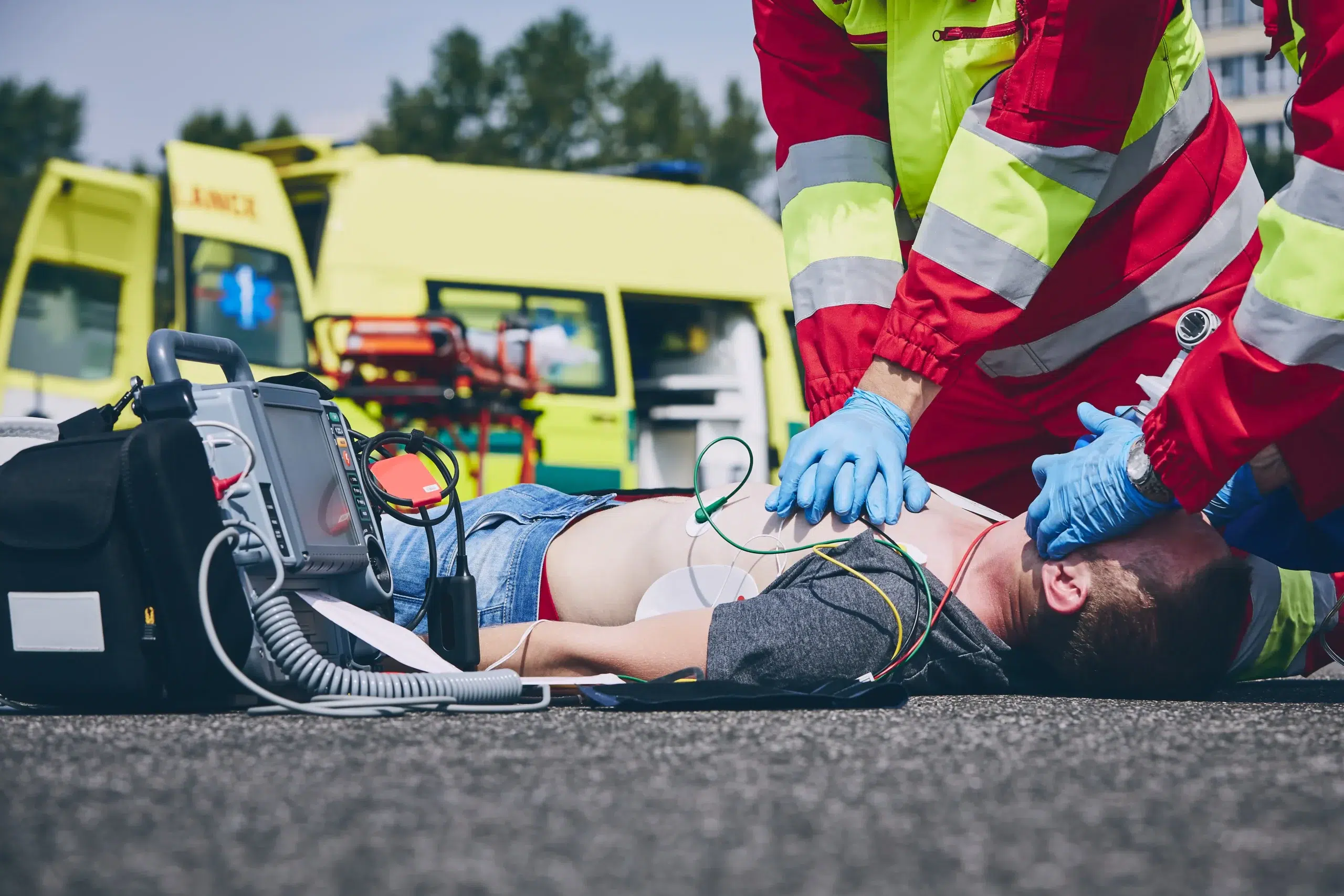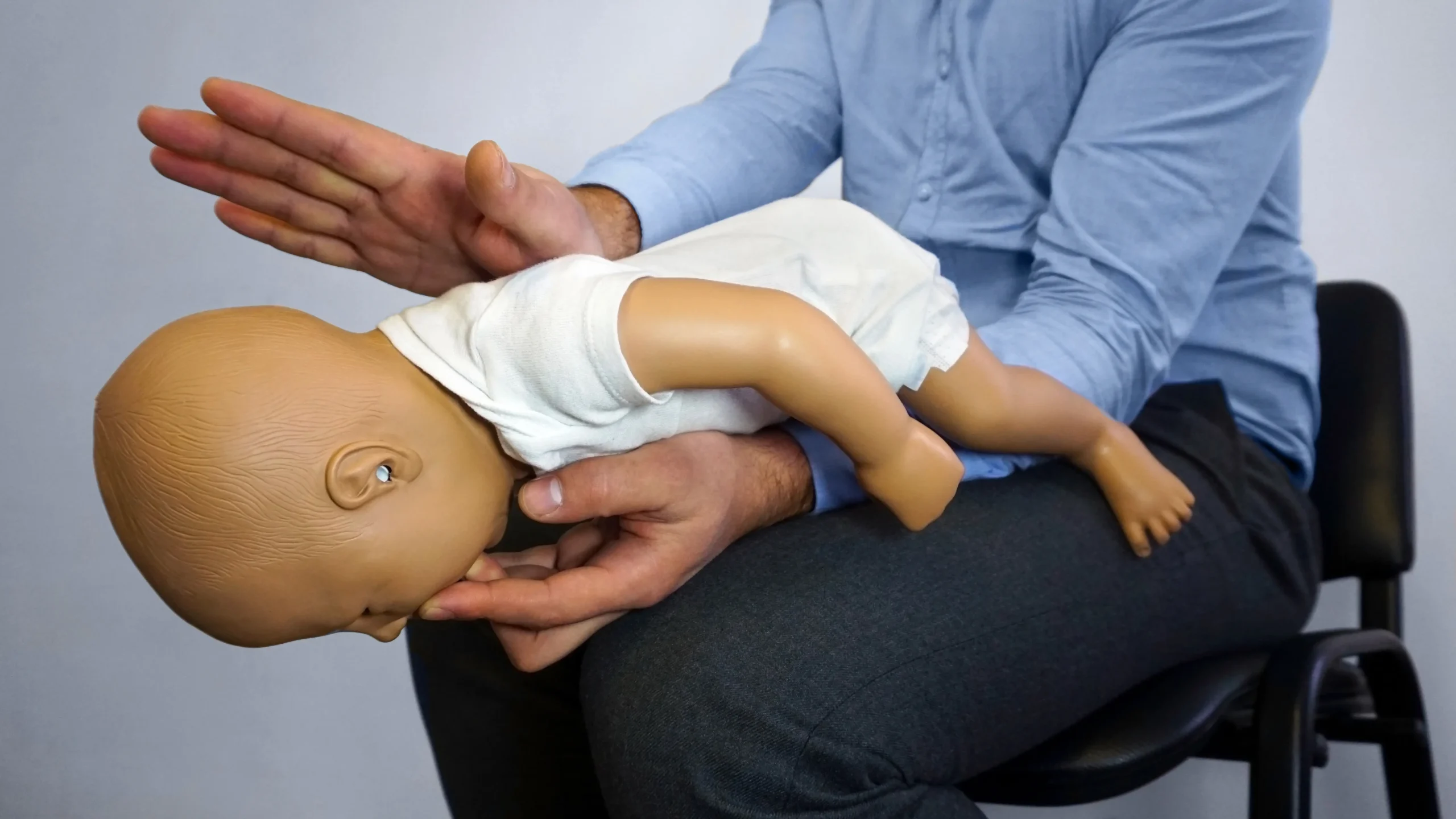Working in healthcare or a related field means your BLS certification is more than just a piece of paper—it’s your lifeline in emergencies. But life gets busy, and finding the time for recertification can feel like one more thing on your to-do list. If you’re searching for “BLS recertification near me,” you’re in the right place. This guide simplifies the process, explaining why staying current is so important, what’s involved in recertification, and how to find the perfect course for your needs. We’ll also explore different learning formats, discuss costs, and share tips for acing the exam. Let’s make recertification as smooth and stress-free as possible.
Key Takeaways
- Regular BLS recertification keeps your lifesaving skills sharp and aligned with the latest guidelines. It’s not just a requirement for many healthcare roles; it’s a commitment to providing the best possible care in emergencies. Staying current builds confidence and competence.
- Finding the right BLS recertification course involves considering several factors. Think about your learning style, schedule, budget, and the course provider’s reputation. Look for convenient locations, accessible formats, and a curriculum that covers the most current AHA guidelines.
- A little preparation goes a long way in ensuring a smooth recertification process. Refresh your knowledge of core BLS skills, gather your materials, and familiarize yourself with the exam format. Planning and practice will boost your confidence and help you succeed.
What is BLS Recertification & Why Does It Matter?
BLS recertification is how healthcare providers and other professionals renew their Basic Life Support skills. It’s a refresher course designed to keep your knowledge and abilities sharp, ensuring you’re prepared to handle emergencies effectively. But why is staying current so important? Let’s take a closer look.
What is Basic Life Support (BLS)?
Basic Life Support (BLS) covers essential life-saving techniques to respond to emergencies. Think CPR, using an AED, and clearing a blocked airway. These BLS skills are the foundation for responding effectively to critical situations.
Why Stay Current with BLS?
Think of BLS recertification as a tune-up for your lifesaving skills. Medical guidelines and best practices are always evolving. Renewing your BLS certification makes sure you’re up-to-date and prepared. It’s not just a formality; it’s about maintaining your confidence and competence in providing high-quality care when every second counts. Plus, most employers require current BLS certification, so timely renewal is essential for your career. Regularly refreshing your skills also helps you stay calm and react effectively under pressure. A two-year recertification cycle keeps you aligned with the latest guidelines.
Find the Best BLS Recertification Providers Near You
Finding the right BLS recertification course boils down to three things: a recognized provider, a convenient location, and a learning experience that suits you. Let’s explore some options:
American Heart Association (AHA)
The American Heart Association offers widely accepted BLS recertification courses designed for healthcare providers. Their certification is recognized nationally, and their courses are known for their comprehensive approach, covering everything from CPR to AED use and effective team dynamics. You can often find AHA courses at hospitals, universities, and other healthcare facilities.
American Red Cross
The American Red Cross is another reputable organization offering BLS recertification. Like the AHA, their courses meet national standards and are accepted by most employers. They offer various formats, including online and in-person options, to fit different learning styles. Red Cross training is often available at community centers, schools, and workplaces.
Safety Training Seminars
For those in the Fremont, Newark, and San Jose area, Safety Training Seminars provides convenient and affordable BLS recertification courses. As an AHA Training Center, we offer the same high-quality curriculum and certification as the AHA, with the added benefit of a local focus. We offer CPR and first-aid certification courses and understand the needs of our community. We strive to make our courses accessible with our low price guarantee and flexible scheduling, including discounted group rates. We also offer other courses such as RQI classes.
Local Healthcare Institutions
Many hospitals and clinics offer BLS recertification courses for their staff and the wider community. These courses are often taught by experienced healthcare professionals, providing valuable real-world insights. Check with hospitals and medical centers near you to see if they have upcoming classes.
Community Colleges
Community colleges frequently offer BLS recertification, often at competitive prices. This can be a good option for those looking for a more structured learning environment. Some community colleges may also integrate BLS recertification into broader healthcare programs. Check with your local community college for course availability and registration information.
Compare BLS Recertification Formats
Choosing the right BLS recertification format depends on your learning style, schedule, and preferences. Let’s break down the pros and cons of online, in-person, and hybrid options.
Online Courses: Flexibility and Convenience
Online BLS recertification courses offer unparalleled flexibility. You can study anytime, anywhere, at your own pace. This format is ideal for busy professionals or those with unpredictable schedules. All study materials are typically included, which streamlines the process. However, if your certification requires a skills check, you’ll need to schedule that separately. Also, remember to follow all online course requirements, like completing modules in order, to avoid delays.
In-Person Classes: Hands-On Experience
In-person BLS recertification classes provide a structured learning environment and direct interaction with instructors. The biggest advantage? Hands-on practice and immediate feedback. This is invaluable for building confidence and mastering essential BLS skills. However, in-person classes require a greater time commitment, as you’ll need to attend scheduled sessions. Finding a class that fits your schedule and location might also take some effort. Consider this when choosing your recertification path.
Hybrid Options: Blend Online & Practical Skills
Hybrid BLS recertification courses offer a balanced approach. You’ll complete the theoretical components online, enjoying the flexibility of self-paced learning, and then attend a shorter in-person session to practice your skills. This format combines the convenience of online learning with the benefits of hands-on training. It’s a great option for those who want flexibility but also value practical experience. Just make sure the in-person skills session aligns with your availability.
BLS Recertification: How It Works
So, you’re ready to renew your BLS certification—smart move! Keeping your skills sharp is essential for providing effective care. This section breaks down the recertification process, from eligibility to getting your updated certification card.
Prerequisites & Eligibility
Before jumping into a recertification course, make sure you meet the requirements. Generally, you’ll need a current BLS provider card from a recognized organization like the American Heart Association (AHA) or the American Red Cross. Some providers allow for a short grace period (often 30 days) after your certification expires, so check with your chosen training center for their specific policy. Our BLS courses in Newark follow AHA guidelines.
Course Duration & Content
BLS recertification courses refresh your core skills and knowledge. They’re typically shorter than initial certification courses, ranging from a few hours to about half a day, depending on the format and provider. Expect a comprehensive review of essential life-saving techniques, including high-quality CPR for adults, children, and infants, AED use, and what to do if someone is choking. The courses also cover the latest guidelines and any updates since your last certification. For more details about our courses, take a look at our page on CPR and First Aid certification. We also offer discounted group classes for businesses and organizations.
Exams & Certification Renewal
The recertification process usually involves completing the training course and passing a skills test and a written exam. Once you successfully complete both, you’ll receive your updated BLS provider card, valid for another two years. This card demonstrates you’re equipped to respond to emergencies and provide critical care. Maintaining your certification shows your commitment to providing the best possible care and your dedication to patient safety. Learn more about our low price guarantee for recertification courses.
BLS Recertification Costs & Deals
Knowing the typical costs associated with BLS recertification, as well as how to spot hidden fees and snag the best deals, can save you time and money. Let’s break down the expenses involved and how to make the most of your recertification budget.
Typical BLS Recertification Costs
BLS recertification costs vary depending on several factors, including your location, the training provider, and the course format (online or in-person). Generally, online recertification courses tend to be more budget-friendly than traditional classroom-based courses. Expect to pay anywhere from $50 to $80 for online BLS recertification and slightly more, around $75 to $100, for in-person classes. Remember that your BLS certification expires every two years. While you can renew up to 30 days after expiration, it’s always best to plan your recertification in advance. Check out our low price guarantee to see how we can help you save.
Watch Out For Extra Fees
While the initial course fee is the primary expense, keep an eye out for potential extra fees. Some providers might charge additional fees for things like study materials, exam fees, or certification card processing. When taking an online BLS recertification course, pay close attention to the course requirements. Overlooking details like completing modules in a specific order or passing a quiz before moving on could lead to unexpected fees or delays in your recertification. Always read the fine print and clarify any questions you have about additional costs before enrolling in a CPR/First Aid course.
Find Discounts & Promotions
One of the smartest ways to save on BLS recertification is to take advantage of discounts and promotions. Many training providers, including Safety Training Seminars, offer special deals for groups, students, or returning customers. You can often find promo codes for CPR/BLS courses online, so do a quick search before registering. Sometimes, bundling courses, like getting your BLS recertification along with ACLS and PALS, can also unlock significant discounts. Check with providers for potential coupon codes or bundled deals. Don’t hesitate to ask your chosen provider about any ongoing promotions—a little research can go a long way in saving you money. We offer discount group classes as well!
Choose the Right BLS Recertification Course
Not all BLS recertification courses are created equal. Finding the right one depends on several factors, including your learning style, schedule, and the course quality itself. Taking the time to carefully evaluate these aspects can make a big difference in how effectively you refresh your lifesaving skills.
Assess Your Learning Style & Schedule
Renewing your Basic Life Support (BLS) certification is crucial for maintaining your preparedness for emergencies. Think about how you learn best. Do you thrive in a traditional classroom setting with face-to-face interaction, or are you more comfortable with the flexibility of online learning? Consider your schedule, too. If you have a busy work life, an online BLS course might be a better fit. We offer various course formats at Safety Training Seminars to accommodate different needs, so you can find one that works for you. Check our course calendar to explore available options.
Evaluate Course Quality & Instructors
BLS guidelines are updated periodically, so it’s essential to choose a course that reflects the latest information from the American Heart Association. Look for courses taught by experienced, certified instructors who can effectively convey these updates and answer your questions. Outdated information can leave you unprepared during a real emergency, so make sure the BLS recertification course you select covers the most current guidelines. Our instructors at Safety Training Seminars stay up-to-date with the latest standards to ensure you receive the most relevant training. Learn more about our courses here.
Consider Location & Accessibility
Convenience matters, especially when you’re fitting recertification into an already packed schedule. If you’re opting for an in-person class, consider the location and how easy it is to get there. Is it close to home or work? Is there ample parking? For those in the Fremont, Newark, and San Jose areas, our Newark location offers accessible and convenient in-person training options. We also offer a low price guarantee to ensure our courses are accessible to everyone. Contact us to learn more about our commitment to affordability and accessibility.
BLS Recertification Myths Debunked
Let’s clear up some common misconceptions about BLS recertification. These myths can create confusion, so we’ll set the record straight to help you stay informed and prepared.
Grace Periods: Fact vs. Fiction
One common myth is that there’s a grace period after your BLS certification expires. This simply isn’t true. BLS certification is valid for two years, and no grace period exists. To maintain your certification, complete a renewal course and pass the exam before your current certification expires. Plan and schedule your recertification in advance to avoid any gaps in your credentials.
Online vs. In-Person Certification: Does It Matter?
You’ll find both online and in-person BLS recertification courses, but it’s crucial to recognize that quality varies. The key is choosing training that meets current American Heart Association standards. A reputable provider ensures your training aligns with current guidelines and adequately prepares you for real-life emergencies. Safety Training Seminars offers both online and in-person options, allowing you to select the format that best suits your learning style and schedule.
Recertification vs. Initial Certification: Key Differences
Recertification focuses on refreshing the essential BLS knowledge and skills you already have. It’s not as extensive as the initial certification, which covers fundamental concepts in greater detail. Recertification courses update your knowledge, reinforce crucial skills, and ensure you’re prepared to respond effectively in time-sensitive situations. Whether you’re a healthcare professional or maintain BLS certification for other reasons, timely recertification keeps your lifesaving skills current.
Prepare for Your BLS Recertification
Getting ready for your BLS recertification doesn’t have to be stressful. With a little preparation, you can walk into the exam room feeling confident and ready to renew your skills. Here’s how:
Refresh Your BLS Knowledge
Staying up-to-date on the latest BLS guidelines is key. These guidelines can change, so it’s important to review them before your recertification. Check the American Heart Association website for the most recent guidelines and any updates since your last certification. Brushing up on the fundamentals will help you feel prepared for the exam. You can also review the materials from your initial BLS CPR and First-Aid certification course.
Gather Your Materials & Equipment
Make sure you have everything you need before you start studying. This might include your BLS manual, a CPR mask, and any other materials recommended by your chosen training center. Having these items ready will prevent any last-minute scrambling and help you focus on your studies. If you’re taking an in-person course, the training center will usually provide the necessary equipment. For online recertification courses, you may need to provide your own. Check with your BLS course provider to confirm.
Tips to Ace the Exam
Practice makes perfect, especially when it comes to BLS skills. Run through the steps for CPR, using your CPR mask and practicing on a manikin if you have access to one. For online recertifications, pay close attention to all module requirements. Some courses require completing modules in a specific order or passing a quiz before moving on. Don’t skip these steps! Regular practice and attention to detail will help you ace the exam. If your certification is about to expire or you want to find the best prices on BLS recertification, check out our low price guarantee.
Related Articles
- BLS Renewal in San Jose: Your Complete Guide – Newark CPR Classes
- BLS Courses in San Jose: The Complete Guide – Newark CPR Classes
- BLS Certification in San Jose: Your 2024 Guide – Newark CPR Classes
- BLS for Healthcare Providers in Newark: A Practical Guide – Newark CPR Classes
- HeartCode BLS Fremont: Your Certification Guide – Newark CPR Classes
Frequently Asked Questions
How often do I need to renew my BLS certification?
BLS certification is typically valid for two years. It’s important to recertify before your current certification expires to maintain your credentials and ensure your skills are up-to-date.
What’s the difference between BLS certification and recertification?
Initial BLS certification courses provide a comprehensive introduction to core life-saving techniques. Recertification courses are shorter and focus on refreshing your existing knowledge and skills, incorporating any updated guidelines.
Can I renew my BLS certification online, or do I have to attend an in-person class?
Both online and in-person BLS recertification courses are available. Online courses offer flexibility, while in-person classes provide hands-on practice and direct interaction with instructors. Choose the format that best suits your learning style and schedule.
How much does BLS recertification cost?
The cost of BLS recertification varies depending on the training provider, location, and course format. Online courses typically range from $50 to $80, while in-person courses might cost slightly more. Look for potential discounts or promotions to save on costs.
Where can I find BLS recertification courses near me?
Several organizations offer BLS recertification courses, including the American Heart Association, the American Red Cross, hospitals, community colleges, and specialized training centers like Safety Training Seminars. Check with these organizations or search online for courses in your area.
